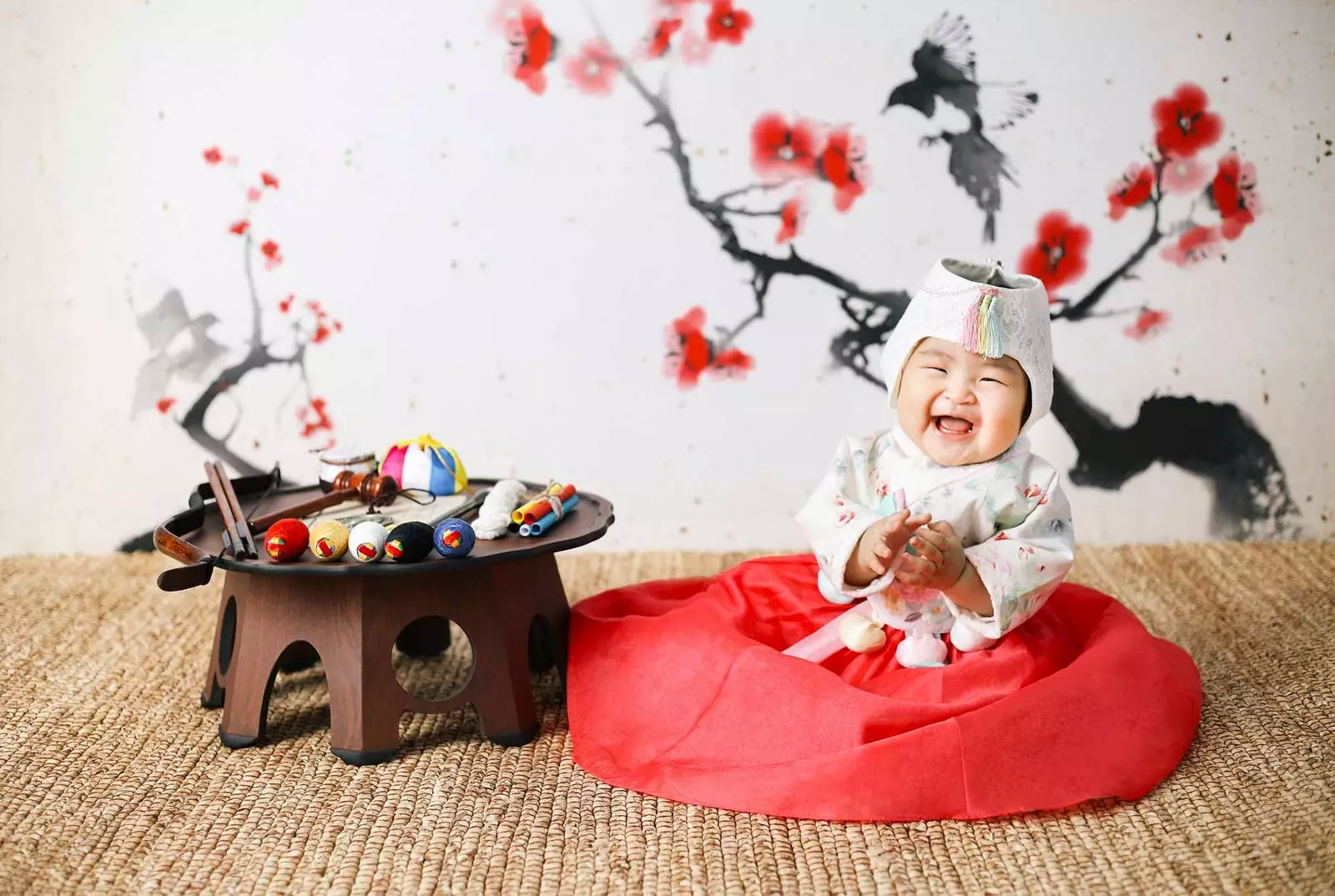
His future is on the table
To babies who turn one year old, those adorable Chubby Dictators, birthdays are organized more for the family than by the honoree himself. The little one, or the little one, will have a good time, but they are really the fathers those who will want to mark the date on the calendar to remember that it has been a year since They don't go to the movies or sleep three hours straight. I say, to celebrate the boundless happiness that his son has brought into their lives.
In South Korea, however, the event takes on almost palatial overtones thanks to the custom of doljanchi , the event marking the baby's first anniversary. The festival, which has its roots around 2,000 years before Christ -began to be celebrated from the reign of King Jeongjo - is halfway lately between a wedding and a communion , with its rental of halls, its banquet and its essentials dreamy photos.
The reason for so much splendor? Back then, with a territory submerged in continuous wars , it was difficult for a baby to reach the year of life So not just family; also all the town met to commemorate the date sharing the table and wishing the little one a long life and good luck.
But what fortune would that be, exactly? To find out, the custom of doljabi was born. “In the doljabi, children are presented with various objects related to different professions or desires . According to tradition, the object that the child grasps first predict your future ”. tell us Ainhoa Urquia , an expert on Korean culture and society. In fact, she has been in Seoul for several years dedicated to literary translation from Korean, and she shares her experiences in Goal Korea .
The objects that were traditionally presented, as she explains to us, were a ball of wool, that it represented a long life; little ones paper rolls tied together forming one, each one of one of the five Korean colors -white, black, blue, yellow and red, the tones that traditionally represent the cardinal points for this culture-. This choice predicted a full life. A traditional writing game , with the brush, the stone for the ink and the stick of Chinese ink that, in ancient times, symbolized that the child would achieve a government post, "The best race possible at the time," says Urquia.
There was also a choice bag of coins , which meant there would be wealth in her life, and lastly, an item that was different depending on the sex of the baby: bow and arrows for children - they represented courage and military excellence - and a cloth thimble or pincushion for girls - they represented good manners.
“Nowadays, it is not so rare for a child to reach that age, but the doljanchi remains as family celebration ”, explains the expert. “An event room with a banquet is usually rented, where family and friends come. One of the most common gifts that guests bring is a golden ring , or a little rattle or gold rattle ”. The reason, according to Urquia, is that, in Asia, this metal symbolizes good luck.
Of course, 4,000 years later, the articles have changed: "Although some objects remain, such as the money or wool , others have disappeared or have been replaced, such as the writing game, for which a pencil that predicts excellence in studies. In addition, to adapt to the new successful professions, they are presented a ball, a microphone, a stethoscope or a judge's gavel. They are even offered a mouse of a computer, which promises a future related to technology!”.
Like the idea of seeing a 21st century baby with a judge's gavel is not the most flattering -we do not know how many children would lose their eyes in their day with pins and arrows-, foam rubber sets are now sold that represent each of the professions, although there are still those who continue to carry out the event with the usual objects. In the latter case, babies are also usually dressed in the traditional costume of the celebration, which consists of a type of hanbok -Korean folk dress- combined with a hat - jobawi either gobble for them and bokgeon either hogeon for them-. It is also taken, on each birthday, seaweed soup, a dish consumed by the mother after giving birth for her healing power, so that everyone remembers her birth every year.
THE CUSTOM OF DOLJABI IN THE WORLD
The Doljabi celebration is not exclusive to Korea: also in China A similar event takes place, called zhua zhou , although the oldest records we have of it date back to "only" 1,000 years ago, during the Song dynasty.
In the past, boy and girl had different objects among those who could choose: them, a ruler, makeup and needles and yarn - basically, it was about choosing what housework they would be better at, since they were not expected to leave the house. In the case of boys, they were proposed swords, pens and books, to know if in the future they would become scholars, heroes or poets - a difficult choice. To both, yes, they were also presented a shallot and a celery ; the former denoted intelligence; the second, diligence.
Today, the objects offered to babies have also changed, although some still differentiating by sex. In addition, the custom also has its mirror in Vietnam -the rite is called thôi noi - and in Armenia , where it is known as Agra Hadig . In this case, the departure of the First tooth of the boy or girl -although it is usually celebrated coinciding with the child's first year- and the objects are also similar: a book -it will be academic-, money -banker-, a hammer -builder-, a knife -doctor- or scissors -will become a tailor-.
